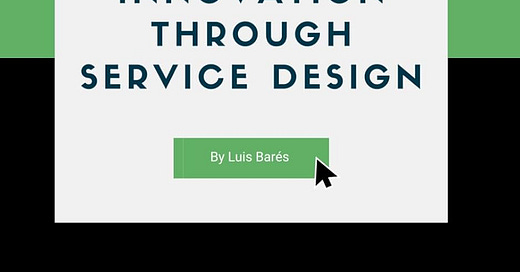CX Book Gems #28: "Human-Centered Government" by Luis Bares
Book summary of "Human-Centered Government: Innovation Through Service Design" by Luis Bares.
Today’s newsletter feature is Human-Centered Government: Innovation Through Service Design by Luis Bares.
📘 Book Summary
Governments worldwide are under increasing pressure to provide effective, efficient, and user-friendly services. Citizens expect the same seamless experiences from public agencies as they receive from leading private-sector brands. However, outdated systems, bureaucratic structures, and policy-driven constraints often hinder meaningful progress. Human-Centered Government explores how service design—a methodology rooted in user research, journey mapping, and iterative improvement—can transform government operations. By placing citizens at the core of service delivery, public agencies can create experiences that are more intuitive, responsive, and impactful.
Government services, when designed with a focus on people, can be just as innovative, efficient, and impactful as those in the private sector.
💎 3 CX Gems
1. Service design as a solution for government innovation
Unlike traditional process improvements, service design offers a holistic, user-centered approach to redesigning government services. It integrates tools like journey mapping, service blueprinting, and prototyping to ensure services are accessible and intuitive while still meeting regulatory requirements.
Service design challenges us to think beyond compliance and efficiency and to focus on creating services that truly meet the needs of people.
2. Bridging the gap between policy and execution
One of the biggest challenges in government is translating policy mandates into effective service delivery. Service design helps agencies focus on user outcomes rather than bureaucratic procedures, enabling them to balance compliance with innovation and streamline citizen interactions.
Service design helps to ensure that new policies are not only well-conceived but also effectively delivered to those they impact.
3. Scaling service design across public agencies
For service design to drive lasting change, it must be embedded into government culture and decision-making. Establishing dedicated teams, co-creation workshops, and cross-agency collaboration ensures that service improvements become sustainable and scalable.
One of the most promising areas for service design in government is coordinating multi-agency services for more holistic user experiences.
✅ 3 Quickstart Tips
Start small and iterate. Instead of overhauling an entire service, identify a high-impact pain point and use service design principles to develop and test new solutions on a small scale before full implementation.
Engage stakeholders early. Involve frontline employees, policymakers, and citizens in the design process to uncover practical insights and build buy-in for service improvements.
Leverage data to drive decisions. Use analytics, user research, and performance metrics to continuously refine and optimize services, ensuring they evolve to meet changing citizen needs.
Service design has the power to revolutionize public services, making them more efficient, user-friendly, and responsive. By embracing a citizen-first mindset, governments can modernize their operations, reduce friction, and deliver services that truly meet public expectations. Human-Centered Government provides a roadmap for agencies ready to make the shift from policy-driven bureaucracy to experience-led service innovation. Through iterative learning, collaboration, and a commitment to human-centered principles, governments can bridge the gap between policy and execution—ultimately creating a better experience for all.



